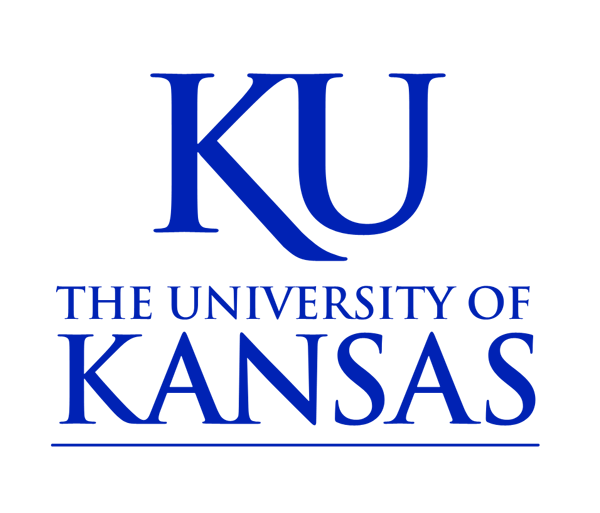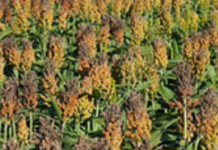Headlines
New machine-learning approach is better at spotting enzymatic metals in proteins
LAWRENCE — Last season, Kansas City Chiefs quarterback Patrick Mahomes boasted a 66.3 pass-completion percentage. But Mahomes’ impressive stat pales compared with the accuracy of MAHOMES, or Metal Activity Heuristic of Metalloprotein and Enzymatic Sites, a machine-learning model developed at the University of Kansas — and named in the quarterback’s honor — that could lead to more effective, eco-friendly and cheaper drug therapies and other industrial products.
Healthcare Design Magazine honors professor of architecture
LAWRENCE — University of Kansas School of Architecture & Design architecture department chair Hui Cai has been named the HDC 10 Educator of the Year by Healthcare Design Magazine. In 2020, Cai actively made contributions as a member of the professional health care design community. During the initial onset of the COVID-19 pandemic, she worked with KU and American Institute of Architects colleagues on launching “ArchMap,” an online database and dashboard that documents the design and construction efforts on alternative care sites during COVID-19.
Full stories below.
————————————————————————
Contact: Brendan Lynch, KU News Service, 785-864-8855, [email protected], @BrendanMLynch
New machine-learning approach is better at spotting enzymatic metals in proteins
LAWRENCE — Last season, Kansas City Chiefs quarterback Patrick Mahomes boasted a 66.3 pass-completion percentage.
But Mahomes’ impressive stat pales compared with the accuracy of MAHOMES, or Metal Activity Heuristic of Metalloprotein and Enzymatic Sites, a machine-learning model developed at the University of Kansas — and named in the quarterback’s honor — that could lead to more effective, eco-friendly and cheaper drug therapies and other industrial products.
Instead of targeting wide receivers, MAHOMES differentiates between enzymatic and non-enzymatic metals in proteins with a precision rate of 92.2%. A team at KU recently published results on this machine-learning approach to differentiating enzymes in Nature Communications.
“Enzymes are super interesting proteins that do all the chemistry — an enzyme does a chemical reaction on something to transform it from one thing to another thing,” said corresponding author Joanna Slusky, associate professor of molecular biosciences and computational biology at KU.
“Everything that you bring into your body, your body breaks it down and makes it into new things, and that process of breaking down and making into new things — all of that is due to enzymes.”
Slusky and graduate student collaborators in her lab, Ryan Feehan (the Chiefs fan who named MAHOMES) and Meghan Franklin of KU’s Center for Computational Biology, sought to use computers to distinguished between metalloproteins, which don’t perform chemical reactions, and metalloenzymes, which facilitate chemical reactions with amazing power and efficiency.
The problem is metalloproteins and metalloenzymes are in many ways identical.
“People don’t exactly know how enzymes work,” Slusky said. “For any given enzyme you can say, ‘OK, you know, it takes off this hydrogen and puts on the -OH group,’ or whatever it does. But if I gave you a protein you had never seen before and I asked, ‘Which end is up? Which side of this does the reaction?,’ you, as a scientist and even as an enzymologist, could probably not tell me. Now, one of the keys is about 40% of all enzymes use metals for catalysis — so their protein binds a metal and then whatever is getting changed comes into that active site and is changed. We see this these metal-binding proteins and metalloenzymes, which are enzymes that are binding metals, as a tremendous opportunity for us because my lab is interested in machine learning that can do a really good job at differentiating enzyme sites from similar but nonenzymatic sites.”
As a KU undergraduate, co-lead author Feehan began compiling the world’s largest structural dataset of enzymatic and nonenzymatic metalloprotein sites — work that carried on into his career as a graduate student. Then, he made the dataset freely available to other researchers on Github.
“Structural data is very hard to come by,” Slusky said. “But if you’re interested in what the physics and chemistry are, and where those atoms are, and what can they do within those relationships, you need protein structures. The hard part of this was getting a bunch of structures of enzyme sites, knowing they were enzyme sites, then getting a bunch of nonenzyme sites that were binding metals — and knowing they were not enzymes — and digging those out from a large structural database.”
Feehan was able to find thousands of unique active and inactive metal binding sites, then tested machine-learning approaches to distinguish between the two. To accomplish this, Feehan and Franklin trained a computer-learning model (MAHOMES) to examine a cleft in a protein and predict if that cleft could do chemistry (meaning it was an enzyme). By looking at physicochemical features, MAHOMES achieved 92.2% precision and 90.1% recall in telling apart the active and inactive sites.
Slusky said the approach could be an important step to making enzymes more useful for the production of life-saving drug therapies and a host of other industrial processes. Indeed, the approach pioneered by the KU team even could revolutionize how enzymes are designed.
“I hope that it will change synthesis in general,” she said. “I hope that there will be cheaper drugs made with fewer environmental ramifications. Right now, pharmaceutical companies’ synthesis has tremendous environmental implications, and it would be great if we could lower those. But there’s also synthesis in generally every industry. If you want to make paint, paint needs synthesis. Everything’s made of chemicals — for instance, textiles. You can harvest cotton, but ultimately, you’re going to give particular material properties to that cotton before you sell it, and that requires chemicals. The more synthesis we can do by enzymes and the easier we can make it for companies to do that synthesis by enzymes, the cheaper it will be, and the greener it will be.”
According to Slusky, the machine-learning research would continue along three lines.
“Number one, we’re trying to make the machine-learning approach work a little bit better,” she said. “Number two, we’re starting to design enzymes with it. And number three is we want to do this for enzymes that don’t bind metals. Forty percent of all enzyme active sites have metals bound. Let’s do the other 60%, too — and finding the right comparison set for the other 60% is a project another graduate student in my lab is working on.”
-30-
————————————————————————
The official university Twitter account has changed to @UnivOfKansas.
Refollow @KUNews for KU News Service stories, discoveries and experts.
Tweets by KUnews
————————————————————————
Contact: Dan Rolf, School of Architecture & Design, 785-864-3027, [email protected], @ArcD_KU
Healthcare Design Magazine honors professor of architecture
LAWRENCE — University of Kansas School of Architecture & Design architecture department chair Hui Cai has been named the HDC 10 Educator of the Year by Healthcare Design Magazine.
The HDC 10 professional awards program honors industry members across 10 categories. The program specifically recognizes the accomplishments of how individuals influenced projects and/or the industry for the better over the 12 months prior to nominations.
Cai, associate professor of architecture, also serves as associate director of the Institute of Health + Wellness Design and leads the Health + Wellness Design graduate certificate program.
Cai has taught several health care design lecture courses and studios at the undergraduate and graduate levels for a decade. She actively collaborates with industry partners, domain experts and peer institutions around the nation. Her teaching focuses on connecting students with real-world experience through critics, reviews and internships.
In 2020, Cai actively made contributions as a member of the professional health care design community. During the initial onset of the COVID-19 pandemic, she worked with KU and American Institute of Architects (AIA) colleagues on launching “ArchMap,” an online database and dashboard that documents the design and construction efforts on alternative care sites during COVID-19.
Cai led efforts to develop the survey instruments and database. ArchMap has proven to be a valuable tool to track and disseminate design knowledge worldwide in response to the COVID-19 pandemic.
“2020 was a year with unprecedented challenges due to the pandemic. However, it also highlighted the importance of health care facilities and healthy community on human health and wellness,” Cai said.
Cai is an active member in the health care design field and strives to advance health care design through three fronts: teaching, research and service in professional communities. Her teaching philosophy is to bridge design education, research and design practice using the evidence-based design approach.
As an educator, Cai has led more than 100 students through the KU Health + Wellness Design program, preparing them for professional life with a rigorous, data-driven and human-centered approach to health care design.
“This honor motivates me to continue pushing the envelope and exploring innovative health care design education to better prepare our students as the next generation of health care designers,” she said.
-30-
————————————————————————
KU News Service
1450 Jayhawk Blvd.
Lawrence KS 66045
Phone: 785-864-3256
Fax: 785-864-3339
[email protected]
http://www.news.ku.edu
Erinn Barcomb-Peterson, director of news and media relations, [email protected]
Today’s News is a free service from the Office of Public Affairs





